Disclosure: This article contains affiliate links. We may earn a commission from purchases at no extra cost to you, which helps our travel content.
As a wildlife biologist who has spent decades studying urban adaptations, I've developed a particular fascination with how human creativity transforms city landscapes. Montreal's street art scene represents a fascinating parallel to the ecological principle of succession—blank walls evolve into vibrant ecosystems of color and meaning through artistic intervention. Having relocated to Ottawa six years ago, I've made numerous research trips to Montreal, and each visit reveals new layers of this dynamic urban canvas. What began as documentation for a comparative urban spaces project has evolved into a passion for tracking the evolution of Montreal's mural ecosystem. This self-guided tour will take you through five districts where art has reclaimed urban space, creating not just aesthetic value but important cultural dialogues about preservation, identity, and the future of our shared environments.
The Plateau: Where Montreal's Mural Movement Began
The Plateau Mont-Royal neighborhood serves as the genesis point for Montreal's street art revolution, a perfect starting location for understanding the evolution of this urban art form. The area's transformation began in earnest during the early 2000s when the city adopted a more progressive stance toward public art as a means of urban revitalization.
Start your exploration at the intersection of Saint-Laurent Boulevard and Mont-Royal Avenue, where the annual MURAL Festival has its epicenter. This international gathering of artists has, since 2013, transformed the Main (as locals call Saint-Laurent) into an open-air gallery. Walking north along Saint-Laurent, you'll encounter massive works by artists like Fluke, Kashink, and Kevin Ledo, whose portrait of Leonard Cohen on the side of a 9-story building serves as a poignant tribute to one of Montreal's most beloved cultural icons.
The ecological themes in many murals reflect Montreal's growing environmental consciousness. Several works incorporate native flora and fauna, creating what I recognize as visual biomes—artistic ecosystems that reflect the region's natural heritage while existing in thoroughly urban contexts. This juxtaposition particularly fascinates me as a biologist; the way urban spaces can serve as canvases for ecological education mirrors my own work in communicating science through accessible narratives.
Duluth Avenue offers a concentration of smaller, more intimate pieces that often address themes of gentrification and cultural preservation—topics particularly relevant as the Plateau continues to evolve socioeconomically. The density of cafés in this area makes it ideal for periodic rest stops as you document your findings.
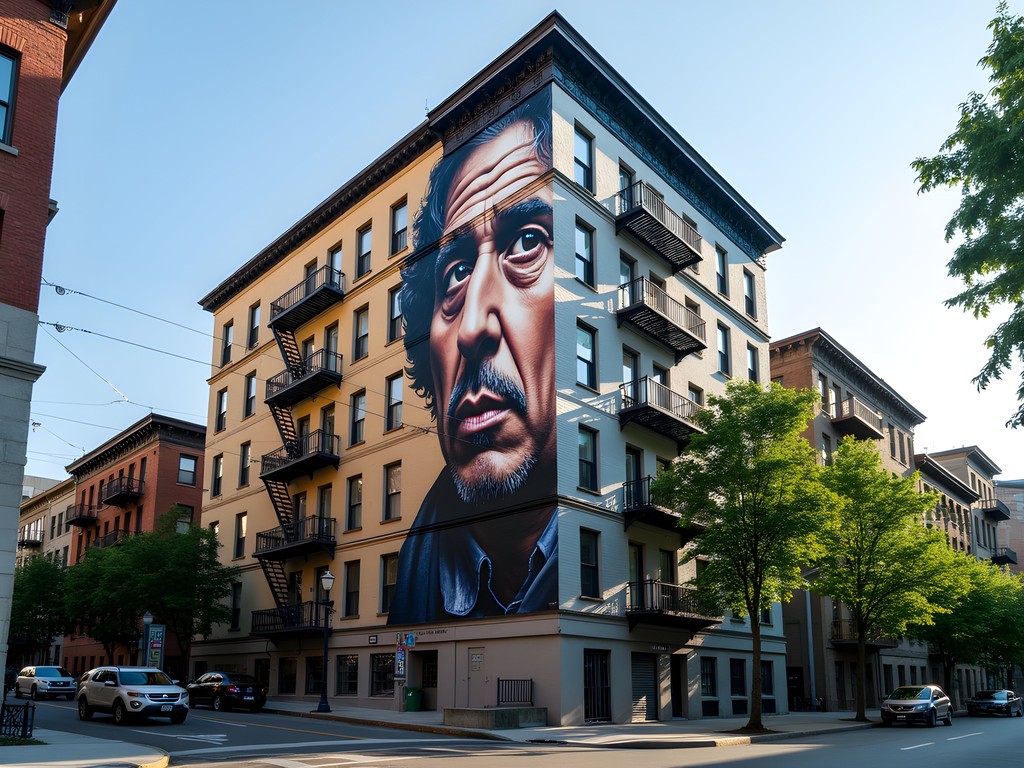
💡 Pro Tips
- Visit on weekday mornings to avoid crowds and get better photos without pedestrians
- The light for photography is best in the late afternoon when the sun hits Saint-Laurent Boulevard at an angle
- Many artists tag their Instagram handles on their works—follow them to learn about new pieces
Mile End: The Intersection of History and Innovation
Adjacent to the Plateau lies Mile End, historically a working-class immigrant district that has transformed into a hub of creative industries while maintaining its multicultural character. This neighborhood exemplifies what urban ecologists call a cultural ecotone—a transition zone where different communities and traditions overlap, creating unique expressions of identity.
Begin at the corner of Saint-Laurent and Saint-Viateur, home to the famous St-Viateur Bagel Shop, and head west. The murals in this area often reflect the neighborhood's Jewish, Greek, and Portuguese heritage, creating a visual anthropology of migration patterns and cultural resilience. The alleyways between Saint-Viateur and Bernard streets contain some of the most experimental works, often addressing themes of displacement and belonging.
What distinguishes Mile End's street art is its integration with the neighborhood's industrial past. Artists frequently incorporate architectural elements of former textile factories into their compositions, preserving historical memory while reimagining these spaces. This adaptive reuse of visual space parallels fascinating biological processes where species repurpose existing structures in changing environments.
For optimal navigation through these art-rich alleyways, I rely on my pocket binoculars to spot details in higher murals that would otherwise be missed. While designed for wildlife observation, they've proven invaluable for appreciating artistic details at a distance without needing to photograph everything immediately.
Don't miss the Ubisoft building's exterior on Saint-Laurent, where digital art concepts often spill into the physical realm through commissioned murals that change periodically, reflecting the fluid boundary between virtual and physical creativity in contemporary urban spaces.

💡 Pro Tips
- The alleyway behind Camellia Sinensis Tea House contains several hidden murals not visible from main streets
- Visit Drawn & Quarterly bookstore for excellent local guides to Montreal art and culture
- Many studios in former factories open to the public during Mile End's annual Portes Ouvertes event
Saint-Henri: Industrial Canvas of Socio-Environmental Commentary
Saint-Henri presents a fascinating case study in how street art functions in neighborhoods undergoing rapid socioeconomic transition. Once a predominantly working-class area centered around the Lachine Canal's industrial corridor, Saint-Henri now hosts some of Montreal's most politically charged murals addressing gentrification, environmental justice, and class dynamics.
Begin your exploration at Place Saint-Henri metro station and walk west along Notre-Dame Street. The contrast between newly renovated condominiums and preserved industrial structures creates a visual tension that local artists directly address in their work. The area around the Atwater Market features several large-scale murals focusing on food security and agricultural heritage—themes that resonate with my research on urban biodiversity and sustainable food systems.
The Lachine Canal pathway offers a linear gallery of works that directly engage with the waterway's environmental history. Artists frequently incorporate themes of industrial pollution, remediation, and the return of wildlife to this once heavily contaminated corridor. As someone who has documented urban wildlife adaptations for decades, I find these artistic interpretations of ecological recovery particularly compelling.
For documenting your journey through Saint-Henri, I recommend a weatherproof notebook. The canal area can be unexpectedly misty, and summer rain showers are common in Montreal. My field research habits have proven valuable in urban exploration—always having a means to record observations regardless of conditions ensures no detail is lost.
The abandoned Canada Malting factory, while not officially accessible, is visible from the canal path and represents one of Montreal's most significant unauthorized street art sites. The juxtaposition of decay and creativity here exemplifies how nature and art similarly reclaim human-abandoned spaces—a process ecologists call succession and artists might term reclamation.

💡 Pro Tips
- Visit the Corona Theatre area for murals related to Montreal's musical heritage
- The Woonerf Saint-Pierre (a pedestrian-priority street) contains community-based art projects worth exploring
- Early Sunday mornings offer the quietest time to photograph the canal-side murals without cyclists and joggers
Hochelaga-Maisonneuve: Community Narratives in Emerging Art Spaces
Hochelaga-Maisonneuve (locally abbreviated as HoMa) represents the expanding frontier of Montreal's street art scene. Less frequented by tourists than the previous neighborhoods, HoMa offers an authentic glimpse into how street art functions as community dialogue rather than spectacle.
Begin at the Pie-IX metro station and head east on Ontario Street. Unlike the commissioned festival pieces common in other districts, HoMa's murals often emerge from grassroots community initiatives addressing food insecurity, affordable housing, and cultural preservation. The area surrounding Marché Maisonneuve contains several works created through intergenerational collaboration between established artists and local youth.
As a researcher accustomed to observing patterns across urban landscapes, I've noted how HoMa's street art often incorporates elements of urban nature—plants growing through concrete, animals adapting to city life—creating visual metaphors for community resilience. These themes resonate with my professional observations of how both human and non-human communities adapt to challenging urban conditions.
The abandoned Alphonse-Desjardins school building on Desjardins Street hosts an evolving collection of works addressing education, childhood, and institutional memory. While photographing these pieces, I've found my portable power bank indispensable. HoMa requires more extensive walking than other districts, and documenting comprehensively can quickly deplete device batteries. Field research habits transfer well to urban exploration—always ensure you have sufficient power for documentation.
Murals in this neighborhood frequently incorporate text in Joual (Quebec French) rather than standard French or English, emphasizing local identity and linguistic heritage. This linguistic territoriality parallels fascinating patterns I've observed in how animal species use vocalizations to establish presence in contested urban habitats.
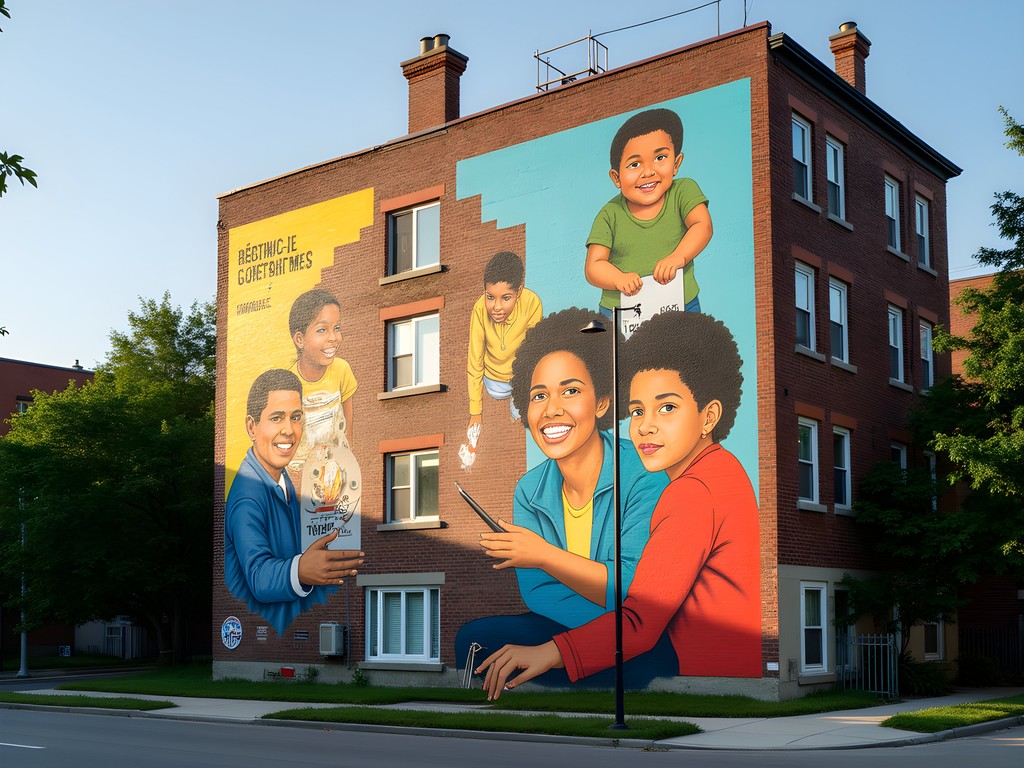
💡 Pro Tips
- Visit the Promenade Ontario for smaller-scale works that change frequently
- Many murals in HoMa are located in residential areas—be respectful when photographing near homes
- Local cafés like Antidote Café often display maps of neighborhood art initiatives
Downtown/Quartier des Spectacles: Institutional Art in Urban Contexts
Our final district presents a distinct contrast to the previous neighborhoods. Downtown Montreal and the Quartier des Spectacles showcase how street art interfaces with institutional power, corporate sponsorship, and cultural programming. This area demonstrates the formalization of street art as it transitions from transgressive act to sanctioned cultural production.
Begin at Place des Arts metro station and explore the surrounding entertainment district. The massive murals here often connect to Montreal's festival circuit, with works commemorating jazz, comedy, and film events that define the city's cultural calendar. Unlike the more spontaneous or community-driven works in other districts, these pieces frequently involve corporate sponsorship and institutional approval processes.
As you move south toward the Quartier International, observe how artistic styles shift to accommodate more conservative corporate environments while still maintaining Montreal's distinctive visual vocabulary. This adaptation parallels fascinating biological phenomena I've studied where species modify behaviors at the boundaries between different urban microhabitats.
The area surrounding the Montreal Museum of Fine Arts on Sherbrooke Street offers an interesting case study in the dialogue between institutional and street art forms. Several established street artists have created sanctioned works that reference pieces in the museum's collection, creating a conversation between indoor and outdoor art spaces.
For this section of the tour, comfortable footwear is essential as you'll cover significant ground on concrete surfaces. My walking shoes have proven ideal for urban exploration—providing the support needed for extended city walks while remaining sufficiently professional for museum visits or impromptu meetings with colleagues.
Don't miss Hydro-Québec's headquarters, where a rotating series of environmentally-themed murals address climate change and energy transition—a corporate appropriation of activist art themes that presents a fascinating study in how environmental messaging transforms across different contexts.

💡 Pro Tips
- Visit during the Montreal Jazz Festival to see temporary art installations that complement the permanent murals
- The Quartier des Spectacles offers free WiFi, useful for researching artists and contexts as you explore
- Many downtown murals are best photographed early Sunday morning when office buildings create less shadow interference
Final Thoughts
This self-guided tour merely scratches the surface of Montreal's evolving street art ecosystem. What fascinates me as a biologist is how these creative expressions function similarly to ecological succession—constantly adapting, competing for space, and responding to environmental changes. The city's murals serve as visual indicators of underlying social and cultural currents, much as certain plant species signal specific soil conditions. As you explore these five districts, I encourage you to observe not just the art itself, but its contexts and interactions with surrounding urban systems. Document changes if you return seasonally, as this landscape evolves continuously. Montreal's walls offer a unique opportunity to witness the intersection of artistic expression, cultural preservation, and urban adaptation—a living laboratory of creative resilience that rewards the curious observer with insights into both human creativity and urban ecology.
✨ Key Takeaways
- Montreal's street art scene is best explored by neighborhood, as each district has distinct artistic styles and themes
- Morning visits offer better photography conditions and fewer crowds, particularly on weekends
- Many murals address environmental themes and local ecological issues, creating outdoor educational spaces
- The evolution of street art from guerrilla expression to institutional programming can be traced through these five districts
📋 Practical Information
Best Time to Visit
June through September, with July offering optimal weather and festival-related temporary installations
Budget Estimate
$10-20 per day (for public transportation and refreshments)
Recommended Duration
One full weekend (2-3 days) for comprehensive exploration
Difficulty Level
Easy To Moderate (Involves 3-5 Miles Of Walking Daily On Mostly Flat Terrain)

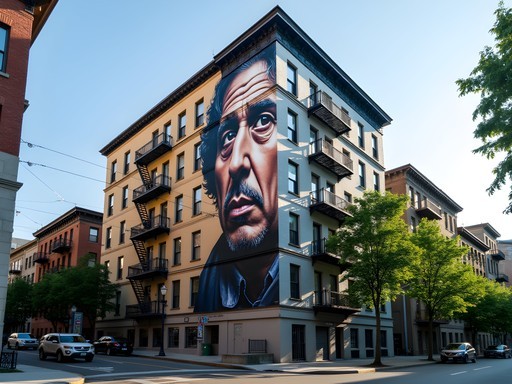

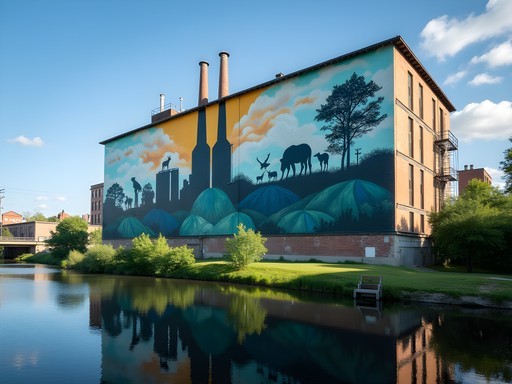




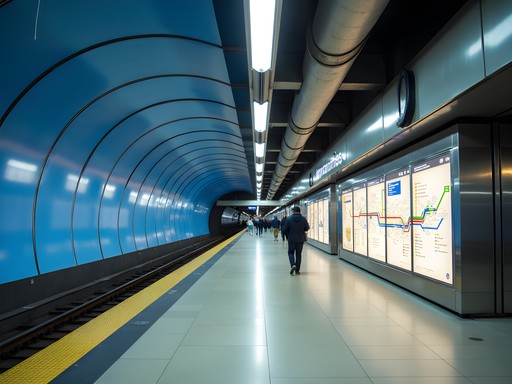

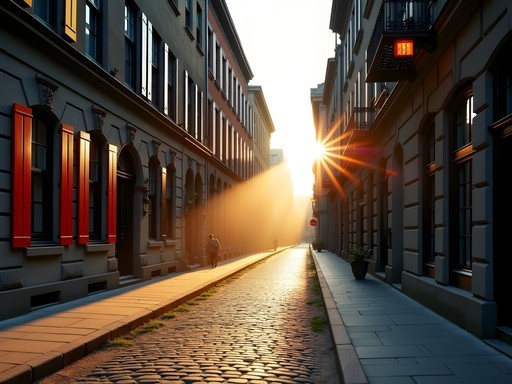
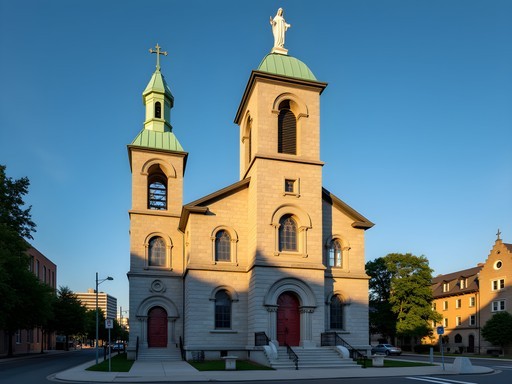
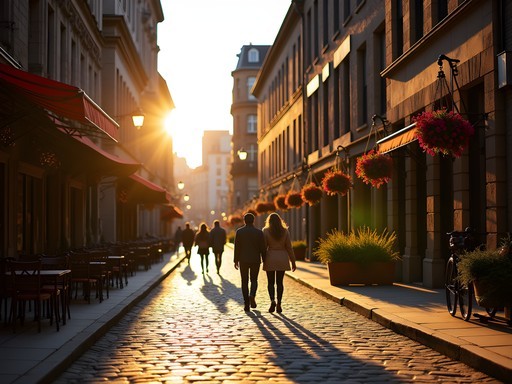
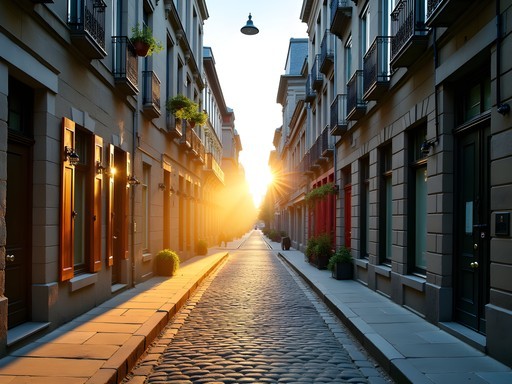


Comments
redchamp
Great post! Is it easy to navigate between these districts using public transport? Or would you recommend biking?
Sage Dixon
Montreal's metro system is fantastic for getting between districts! But I personally rented a BIXI bike (their bike share program) and loved the flexibility to stop whenever I spotted something interesting. The city is surprisingly bike-friendly.
starrider
Love the Hochelaga-Maisonneuve section! So underrated!
travelphotographer
Just got back from Montreal last month and the street art was definitely a highlight! The contrast between the historic architecture and modern murals creates such amazing photo opportunities. The Saint-Henri area was my favorite - those industrial backdrops give the art so much more context. I spent an entire afternoon just wandering and shooting. Pro tip: early morning light in Mile End creates the most stunning shadows across the murals. Brought my camera backpack which was perfect for carrying gear while walking all day.
redchamp
How many days would you recommend for exploring all these districts? Planning a trip in July.
travelphotographer
I'd say at least 2-3 days if you really want to see everything and take your time with photos. The Plateau alone took me almost a full day!
moonway
Wow! Never knew Montreal had such an amazing street art scene! Adding this to my bucket list for sure!
Sage Dixon
It's definitely worth the trip! I was there last fall and the murals in The Plateau blew me away.
moonway
Thanks Sage! Did you follow this exact tour route?
Sophia Wilson
Thank you all for the wonderful comments! I'm thrilled so many of you have used this guide. Quick update: There's a new collection of murals in the Saint-Henri district that went up last month focusing on climate change awareness. They're located just two blocks north of the spots I mentioned in the original post. Also, for those asking about guided options, I recently discovered Montreal Mural Tours offers excellent guided walks with local artists who provide fascinating context you won't get on your own. Worth the splurge if you want deeper insights into the artistic process and neighborhood histories.
sunnyace
Love the biological perspective on street art! Are there any guided tours available if we don't want to self-guide?
Fatima Sims
I took a tour with 'Spade & Palacio' last year - their 'Beyond the Main' tour was excellent! Local guides who really know the stories behind the murals.
coolgal
As a Montreal local, I love seeing visitors appreciate our street art! The Mile End section has some amazing cafes too - perfect for warming up between mural hunting. Check out Café Olimpico if you need a coffee break!
journeybuddy
Thanks for the coffee tip! Any food spots you'd recommend near the art districts?
coolgal
La Banquise for poutine in the Plateau, Arthurs for amazing brunch in Saint-Henri, and Schwartz's for the classic Montreal smoked meat sandwich! All near great murals!
mountaindiver
Just got back from Montreal and used this guide - it was spot on! The Saint-Henri district was my favorite with all those industrial-themed murals. We spent an entire afternoon just in that area. Thanks for putting this together!
globephotographer
Any specific streets in the Plateau area that have the highest concentration of murals? Planning a short visit and want to maximize my time.
coolgal
Saint-Laurent Boulevard between Sherbrooke and Mont-Royal is mural heaven! Don't miss the side streets too - some hidden gems there.
Timothy Jenkins
Having documented street art across 30+ cities, I can confidently say Montreal's scene is among the most vibrant and accessible. What makes it special is the strong connection between the art and local community issues, particularly in Hochelaga-Maisonneuve as Sophia mentioned. For photographers visiting, I'd suggest bringing a wide angle lens to capture the massive scale of some murals. The annual MURAL Festival in June transforms the city, but I actually prefer September when the crowds thin but the newest works are still fresh. Excellent guide that really captures the distinct personality of each district!
Venture X
Premium card with 2X miles, $300 travel credit, Priority Pass